
The Serbian Orthodox Church is one of the autocephalous Eastern Orthodox Christian churches.
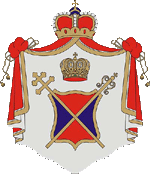
The Montenegrin Orthodox Church is a canonically unrecognized Eastern Orthodox Church. It was formed in 1993 and registered as a non-governmental organization. Antonije Abramović was appointed as its first metropolitan. It claims succession to an older and autocephalous Montenegrin Church, which operated until the unification of the Kingdom of Serbia and Kingdom of Montenegro, later to join the Kingdom of Serbs, Croats and Slovenes in 1918.

The Eparchy of Zahumlje, Herzegovina and the Littoral is an eparchy (diocese) of the Serbian Orthodox Church with its seat in Mostar, Bosnia and Herzegovina. It has jurisdiction over the region of Herzegovina, the littoral region of southern Dalmatia in Croatia and a small part of Montenegro. Since 2018, the bishop of Zahumlje and Herzegovina has been Dimitrije Rađenović.
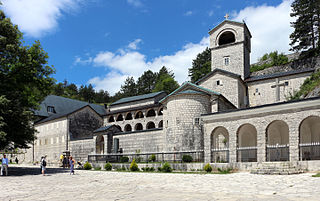
The Metropolitanate of Montenegro and the Littoral of the Serbian Orthodox Church is the largest eparchy (diocese) of the Serbian Orthodox Church in modern Montenegro. Founded in 1219 by Saint Sava as the Eparchy of Zeta, it has continued to exist, without interruption, up to the present time, and has remained one of the most prominent dioceses of the Serbian Orthodox Church. The current Metropolitan bishop is Joanikije II. His official title is "Metropolitan of Montenegro and the Littoral".

The culture of Montenegro is as pluralistic and diverse as its history and geographical position would suggest. Montenegro's culture has been influenced by the Serbian Empire, the Byzantine Empire, ancient Greece, ancient Rome, Christianity, the Ottoman Empire, the Republic of Venice, Austria-Hungary, and Yugoslavia.
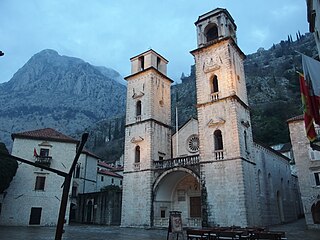
Eastern Orthodox Christianity is largest religion in Montenegro, but there are also sizeable numbers of adherents of both Catholic Christianity and Islam.

Amfilohije was a bishop of the Serbian Orthodox Church, theologian, university professor, author and translator. He was first the Bishop of Banat between 1985 and 1990, and then the Metropolitan Bishop of Montenegro and the Littoral from 1990, until his death. As the metropolitan bishop, he was the primate of the Serbian Orthodox Church in Montenegro. He was one of the most influential leaders of the Serbian Church, and was among the three candidates for the Serbian patriarchate both in 1990 and 2010.

Eastern Orthodoxy in Italy refers to adherents, religious communities, institutions and organizations of Eastern Orthodox Christianity in Italy. In 2014, there were 14 distinctive Eastern Orthodox jurisdictions on the territory of Italy, some of them belonging to canonical Eastern Orthodox churches, while others are classified as independent (noncanonical). First session of the Council of Canonical Orthodox Bishops in Italy was held in 2009.

The Đurđevi Stupovi Monastery is a Serbian Orthodox monastery near the town of Berane, in northeastern Montenegro. It was founded by Stefan Prvoslav, the nephew of Stefan Nemanja, in 1213. Since 2019, it was the cathedral monastery of the Eparchy of Budimlja, until the end of the 17th century. Today, it is the cathedral monastery of the Serbian Orthodox Eparchy of Budimlje-Nikšić in Montenegro.

The Eparchy of Budimlja and Nikšić or Budimlja–Nikšić is an eparchy (diocese) of the Serbian Orthodox Church, covering eastern, central, and western parts of modern Montenegro. The ecclesiastical seat of the eparchy is the Monastery of Đurđevi Stupovi in Berane. Since 2021 it has been headed by Metodije, bishop of Budimlja and Nikšić.

Antonije Abramović was an Eastern Orthodox archimandrite, who became the first primate of the canonically unrecognized Montenegrin Orthodox Church, serving from 1993 to 1996. He was styled as His Beatitude the Archbishop of Cetinje and Metropolitan of Montenegro.
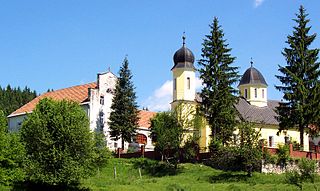
Eastern Orthodoxy in Croatia refers to adherents, religious communities, institutions and organizations of Eastern Orthodox Christianity in Croatia. It is the second-largest religious denomination in Croatia, behind the Roman Catholic Church. Over 128 000 people, forming 3.32% of the total Croatian population, are Eastern Orthodox Christians (2021).
Eastern Orthodoxy in Hungary refers to communities, institutions and organizations of the Eastern Orthodox Christianity in Hungary. Historically, Eastern Orthodoxy was an important denomination in the medieval and early modern Kingdom of Hungary. In modern times, Eastern Orthodoxy is mainly the religion of some ethnic minorities. In the 2001 national census, only 15,928 persons declared themselves Orthodox Christians. Estimates in 2020 suggested that 1.54% of the population was Orthodox.

Serbs of Montenegro or Montenegrin Serbs, compose native and the second largest ethnic group in Montenegro, after the ethnic Montenegrins. Additional 0.64% of the population is made up of Serbs-Montenegrins and Montenegrins-Serbs.
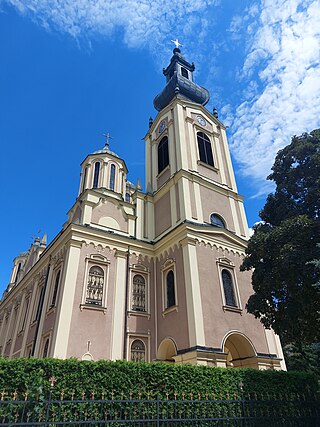
The Metropolitanate of Dabar-Bosnia is a metropolis of the Serbian Orthodox Church in Bosnia and Herzegovina, seated in Sarajevo. Since 2017, Metropolitan of Dabar and Bosnia is Hrizostom Jević.

In late December 2019, a wave of protests started against the controversial, newly adopted "Law on Freedom of Religion or Belief and the Legal Status of Religious Communities" which effectively transferred ownership of church buildings and estates built before 1918 from the Serbian Orthodox Church in Montenegro to the Montenegrin state. The Serbian Orthodox Church in Montenegro, which owned 66 mainly medieval monasteries, dozens of churches and other real estate there, insisted the state wanted to impound its assets, while Pro-Western Montenegro's president Milo Đukanović, accused the Serbian church of promoting pro-Serb policies that are aimed at "undermining Montenegrin statehood".

Joanikije II is a Serbian Orthodox metropolitan bishop serving as the Metropolitan of Montenegro and the Littoral and the primate of the Serbian Orthodox Church in Montenegro since May 2021, previously he served as the administrator of the same diocese from October 2020, and death of his predecessor Amfilohije (Radović). Bishop Joanikije was the head of the Eparchy of Budimlja and Nikšić from 2002 until 2021 and titular bishop of Budimlja betweein 1999 and 2002.

A series of violent protests against the enthronement of Joanikije Mićović of the Serbian Orthodox Church as the Metropolitan of Montenegro and the Littoral took place at the historic Cetinje Monastery in September 2021.

Bishop Metodije is a Serbian Orthodox bishop from Montenegro who has served as the head of the Eparchy of Budimlja and Nikšić since 29 May 2021. He is a former auxiliary bishop in the Metropolitanate of Montenegro and the Littoral (2018–2021).






















